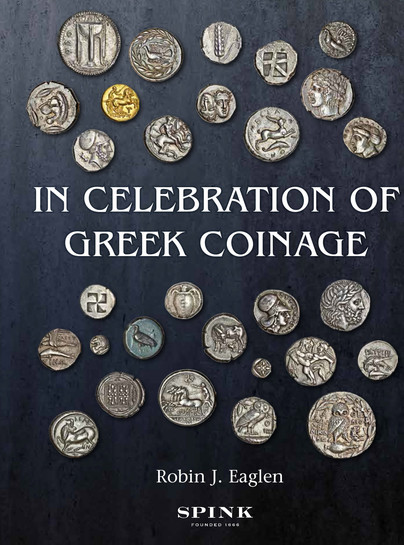
Format: Hardback
Pages: 240
ISBN: 9781907427770
Pub Date: 30 Jun 2017
Illustrations: colour illustrations thr40oughout
Description:
In Celebration of Greek Coinage is a readable but scholarly tribute to ancient Greek coins, its origin being a thoughtful study of the author's own collection, acquired over the past seventeen years. Two initial chapters relate the author's devotion to numismatics and his thoughts on Greek coins as art; these are followed by fifty essays inspired by coins in the author's own collection, comprised of articles which mainly first appeared in the Spink Numismatic Circular and its magazine the Insider, revised and updated for this volume. The essays seek to identify the formative geographical, historical, ethnic, political, religious, cultural, artistic, social, economic and commercial influences behind the coins.

Format: Paperback
Pages: 208
ISBN: 9781785706400
Pub Date: 30 Jun 2017
Description:
The interpretation of archaeological remains as farmsteads has met with much debate in scholarship regarding their role, identification, and even their existence. Despite the difficult nature of scholarship surrounding farmsteads, this site type is repeatedly used to describe small sites in the countryside which have varying evidence of domestic, storage, and agricultural activity. The aim of this book is to engage with the archaeological and textual data for farmsteads dating to the Classical–Hellenistic period of mainland Greece, with the purpose of understanding how these sites fulfilled agricultural roles as centres for occupation, storage, and processing for those working the land.
The conclusions reached here stress the connected nature of the agricultural landscape, and demonstrate how farmsteads played a fundamental role in ancient Greek agriculture.

Format: Paperback
Pages: 176
ISBN: 9781785706448
Pub Date: 30 Jun 2017
Description:
Understanding Relations Between Scripts: The Aegean Writing Systems arises from a conference held in Cambridge in 2015. The question of how writing systems are related to each other, and how we can study those relationships, has not been studied in detail and this volume aims to fill a gap in scholarship by presenting a number of case studies focused on the writing systems of the Bronze Age Aegean. These include Cretan Hieroglyphic, Linear A and Linear B, used predominantly in Crete and mainland Greece, as well as the Cypro-Minoan script of Cyprus.
Most of these systems (the only major exception being Linear B) remain undeciphered to some degree but we nevertheless have considerable evidence for their development and use. Each contributor focuses on a different theoretical problem and/or set of scripts. Important questions include: How and why did writing emerge in Crete in the Middle Bronze Age? What is the relationship between writing and art? Why did different writing systems co-exist with each other? What changes were made when a new system was developed from an old one? Can our understanding of how different systems are related to each other help us to reconstruct the values of script signs? The contributors tackle such questions by employing a variety of methods, from epigraphic and palaeographic analysis to typological comparison and contextual study. The result is a coherent volume that will not only enrich our understanding of the ancient Aegean writing systems in particular, but will also provide an important example for future studies of writing across the world.
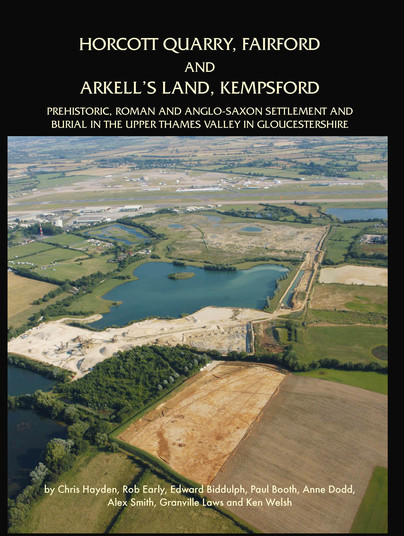
Format: Hardback
Pages: 552
ISBN: 9781905905386
Pub Date: 31 May 2017
Illustrations: 259 illustrations, 134 tables
Description:
Excavations in advance of gravel quarrying in the Upper Thames Valley at Horcott Quarry, Fairford, and nearby Arkell’s Land, Kempsford, revealed contrasting pictures. At Horcott, on the second terrace, there was periodic activity from the early Mesolithic onwards. A major earlier Iron Age settlement contained roundhouses and at least 135 four-post structures, suggesting an exceptional focus on grain storage.
An early–middle Roman farmstead incorporated a small stone-founded building, while from c AD 250–350 a large cemetery lay in an adjacent enclosure. Two further groups of burials were contemporary with a substantial Anglo-Saxon settlement including a timber hall and 33 sunken-featured buildings. By contrast, at Arkell’s Land, on the first gravel terrace, activity on a significant scale only began in the later 1st century AD. It comprised enclosures, field systems and trackways, with the most intensive settlement, as at Horcott, in the middle Roman period. The site was probably linked to an adjacent estate centre at Claydon Pike. There was no post-Roman occupation.

Format: Paperback
Pages: 82
ISBN: 9781842170496
Pub Date: 31 May 2017
Series: Journal of Roman Pottery Studies
Illustrations: b/w pls
Description:
Rossington Bridge lies next to the Roman road between Doncaster and Lincoln. Excavations between 1956-1961 discovered eight pottery kilns, a site of considerable significance. The kilns and material from the waster heaps excavated lie on a site with at least fifteen other unexcavated kilns and ancillary structures lying either side of the Roman road.
The bulk of the finds clearly belong to the main period of activity on the site during the mid-2nd century when the mortarium potter Sarrius and his associates were involved in the production of mortaria, 'parisian' fine wares, black-burnished and grey wares intended for the military markets on the Northern frontier.
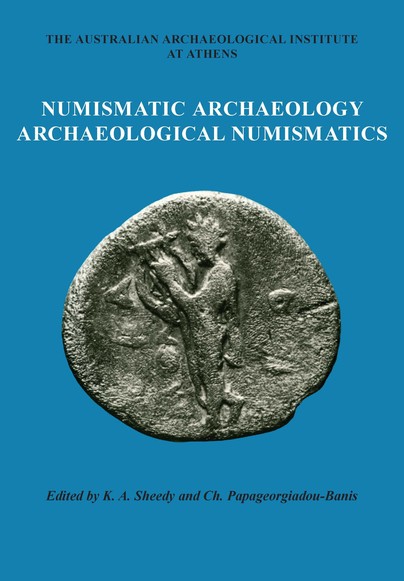
Format: Paperback
Pages: 180
ISBN: 9781900188234
Pub Date: 31 May 2017
Illustrations: pls
Description:
These papers examine the ongoing relationship between numismatic research and archaeology in Greece; they are based on a 1995 conference organised by the Athens National Museum and the Australian Archaeological Institute at Athens in honour of Dr Mando Oeconomodies.

Format: Hardback
Pages: 240
ISBN: 9781785705960
Pub Date: 31 May 2017
Illustrations: b/w
Description:
A recent surge of interest in network approaches to the study of the ancient world has enabled scholars of the Roman Empire to move beyond traditional narratives of domination, resistance, integration and fragmentation. This relational turn has not only offers tools to identify, map, visualize and, in some cases, even quantify interaction based on a variety of ancient source material, but also provides a terminology to deal with the everyday ties of power, trade, and ideology that operated within, below, and beyond the superstructure of imperial rule. Thirteen contributions employ a range of quantitative, qualitative and descriptive network approaches in order to provide new perspectives on trade, communication, administration, technology, religion and municipal life in the Roman Near East and adjacent regions.

Format: Paperback
Pages: 272
ISBN: 9781785703232
Pub Date: 25 May 2017
Series: Studies in Funerary Archaeology
Illustrations: b/w
Description:
The study of funerary practice has become one of the most exciting and rapidly developing areas of Roman archaeology in recent decades. This volume draws on large-scale fieldwork from across Europe, methodological advances and conceptual innovations to explore new insights from analysis of the Roman dead, concerning both the rituals which saw them to their tombs and the communities who buried them. In particular the volume seeks to establish how the ritual sequence, from laying out the dead to the pyre and tomb, and from placing the dead in the earth to the return of the living to commemorate them, may be studied from archaeological evidence.
Contributors examine the rites regularly practised by town and country folk from the shores of the Mediterranean to the English Channel, as well as exceptional circumstances, as in the aftermath of the Varian disaster in Augustan Germany. Case studies span a cross-section of Roman society, from the cosmopolitan merchants of Corinth to salt pan workers at Rome and the rural poor of Britannia and Germania. Some papers have a methodological focus, considering how human skeletal, faunal and plant remains illuminate the dead themselves and death rituals, while others examine how to interpret the stratigraphic signatures of the rituals practised before, around and after burial. Adapting anthropological models, other papers develop interpretive perspectives on the funerary sequences which can thus be reconstructed and explore the sensory dimensions of burying and commemorating the dead. Through these varied approaches the volume aims to demonstrate and develop the richness of the insights into Roman society and culture which may be won from study of the dead.
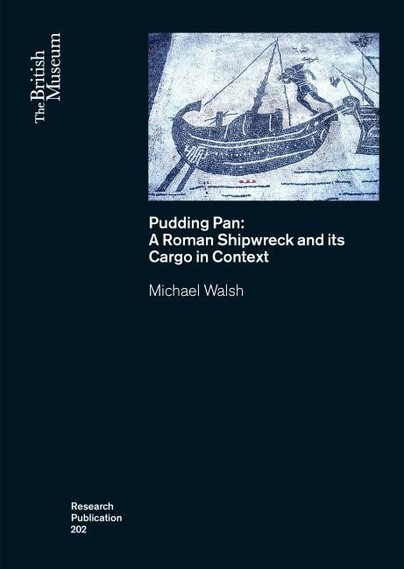
Format: Paperback
Pages: 202
ISBN: 9780861592029
Pub Date: 30 Apr 2017
Series: British Museum Research Publications
Illustrations: 80 colour illus.
Description:
For more than 300 years commercial fishermen working in the outer Thames estuary have recovered Roman pottery in their oyster dredgers and fishing nets from the seabed in the vicinity of Pudding Pan. However, despite numerous attempts to locate the source of the material, this elusive site has remained undiscovered beneath the waves. This book assesses the recovered assemblage from Pudding Pan to determine the nature and location of the site.
Almost 700 artefacts have been retrieved from this area to date, the majority of which are complete plain samian wares, one of the key indicators of the widespread cultural reception of Rome, which were undoubtedly transported throughout the Empire in huge quantities. The exhaustive research presented in this book convincingly argues that the material represents an unknown proportion of a cargo from a Roman trading ship en route from northern France to London that was deposited on the seabed between AD 175 and 195; it is not yet clear whether the deposit represents a shipwreck or a jettisoned cargo. Such a site is extremely rare throughout the Roman Empire, particularly so in northern Europe, and its discovery could play a crucial role in our understanding of Roman trade. The search for the site continues, but this publication offers the first detailed study of a seemingly predominantly samian cargo in British waters and contributes a new perspective on the organisation of trade and consumption in the Roman era.

Format: Hardback
Pages: 164
ISBN: 9781785706042
Pub Date: 31 Mar 2017
Series: TRAC Themes in Archaeology
Illustrations: b/w
Description:
This first thematic volume of the new series TRAC Themes in Roman Archaeology brings renowned international experts to discuss different aspects of interactions between Romans and ‘barbarians’ in the north-western regions of Europe. Northern Europe has become an interesting arena of academic debate around the topics of Roman imperialism and Roman–‘barbarian’ interactions, as these areas comprised Roman provincial territories, the northern frontier system of the Roman Empire (limes), the vorlimes (or buffer zone), and the distant barbaricum. This area is, today, host to several modern European nations with very different historical and academic discourses on their Roman past, a factor in the recent tendency towards the fragmentation of approaches and the application of post-colonial theories that have favoured the advent of a varied range of theoretical alternatives.
Case studies presented here span across disciplines and territories, from American anthropological studies on transcultural discourse and provincial organization in Gaul, to historical approaches to the propagandistic use of the limes in the early 20th century German empire; from Danish research on warrior identities and Roman–Scandinavian relations, to innovative ideas on culture contact in Roman Ireland; and from new views on Romano-Germanic relations in Central European Barbaricum, to a British comparative exercise on frontier cultures. The volume is framed by a brilliant theoretical introduction by Prof. Richard Hingley and a comprehensive concluding discussion by Prof. David Mattingly.
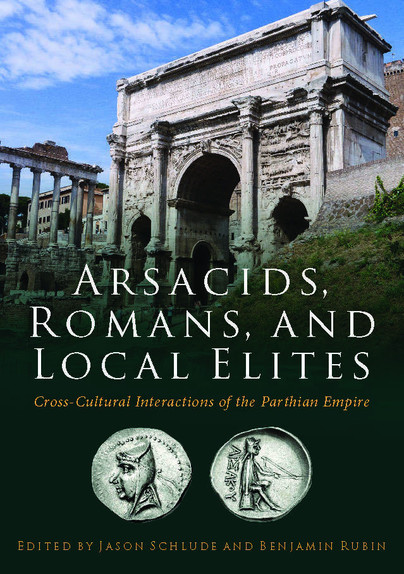
Format: Paperback
Pages: 184
ISBN: 9781785705922
Pub Date: 21 Mar 2017
Illustrations: b/w
Description:
For almost 500 years (247 BCE–224 CE), the Arsacid kings of Parthia ruled over a vast multi-cultural empire, which encompassed much of central Asia and the Near East. The inhabitants of this empire included a complex patchwork of Hellenized Greek-speaking elites, Iranian nobility, and semi-nomadic Asian tribesman, all of whom had their own competing cultural and economic interests. Ruling over such a diverse group of subjects required a strong military and careful diplomacy on the part of the Arsacids, who faced the added challenge of competing with the Roman empire for control of the Near East.
This collection of new papers examines the cross-cultural interactions among the Arsacids, Romans, and local elites from a variety of scholarly perspectives. Contributors include experts in the fields of ancient history, archaeology, classics, Near Eastern studies, and art history, all of whom participated in a multi-year panel at the annual conference of the American Schools of Oriental Research between 2012 and 2014. The seven chapters investigate different aspects of war, diplomacy, trade, and artistic production as mechanisms of cross-cultural communication and exchange in the Parthian empire. Arsacids, Romans, and Local Elites will prove significant for those interested in the legacy of Hellenistic and Achaemenid art and ideology in the Parthian empire, the sometimes under-appreciated role of diplomacy in creating and maintaining peace in the ancient Middle East, and the importance of local dynasts in kingdoms like Judaea, Osrhoene, and Hatra in shaping the geopolitical landscape of the Near East, alongside the imperial powerhouses of Rome and Parthia.


Pages: 152
ISBN: 9781785702792
Pub Date: 12 Jan 2017
Series: Ancient Textiles
Illustrations: bw and colour
Pages: 152
ISBN: 9781789255515
Pub Date: 15 Nov 2020
Series: Ancient Textiles
Description:
Already in Greek and Roman antiquity a vibrant series of exchange relationships existed between the Mediterranean regions and China, including the Indian subcontinent, along well-defined routes we call the Silk Roads. Among the many goods that found their way from East to West and vice versa were glass, wine spices, metals and precious stones as well as textile raw materials and fabrics of wool and silk, a precious fibre that was highly appreciated in many of the cultures along the roads that were named after it by modern scholars. These collected papers bring together current historical, philological and archaeological research from different areas and disciplines in order highlight the use, circulation and meaning of silk as a commodity, gift, tribute , booty, and status symbol in varying cultural and chronological contexts between East and West, including technological aspects of silk production.
Rome and China in antiquity provide the geographical and chronological frame for this volume (c. from the third century BCE to the fifth century CE), but also earlier and later epochs and cultures in between these empires are considered in order to build and intercultural and diachronic understanding of long-distance relations that involved silk.
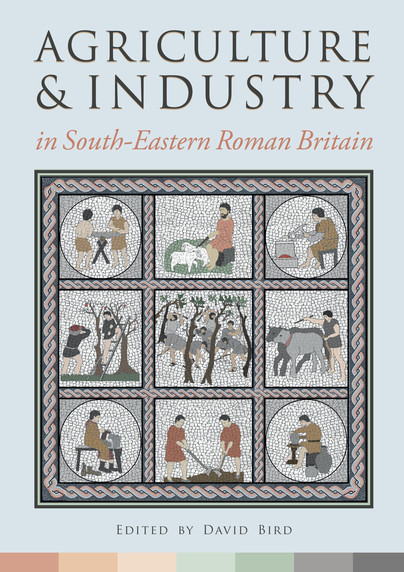
Format: Paperback
Pages: 368
ISBN: 9781785703195
Pub Date: 31 Dec 2016
Illustrations: b/w and colour
Description:
The ancient counties surrounding the Weald in the southeastern corner of England have a strongly marked character of their own that has survived remarkably well in the face of ever-increasing population pressure. The area is, however, comparatively neglected in discussion of Roman Britain, where it is often subsumed into a generalised treatment of the ‘civilian’ part of Britannia that is based largely on other parts of the country. This book aims to redress the balance.
The focus is particularly on Kent, Surrey and Sussex account is taken of information from neighbouring counties, particularly when the difficult subsoils affect the availability of evidence. An overview of the environment and a consideration of themes relevant to the South-East as a whole accompany 14 papers covering the topics of rural settlement in each county, crops, querns and millstones, animal exploitation, salt production, leatherworking, the working of bone and similar materials, the production of iron and iron objects, non-ferrous metalworking, pottery production and the supply of tile to Roman London. Agriculture and industry provides an up-to-date assessment of our knowledge of the southern hinterland of Roman London and an area that was particularly open to influences from the Continent.

Format: Hardback
Pages: 384
ISBN: 9781785703553
Pub Date: 31 Dec 2016
Series: Ancient Textiles
Illustrations: b/w and colour
Description:
Textiles comprise a vast and wide category of material culture and constitute a crucial part of the ancient economy. Yet, studies of classical antiquity still often leave out this important category of material culture, partly due to the textiles themselves being only rarely preserved in the archaeological record. This neglect is also prevalent in scholarship on ancient Greek religion and ritual, although it is one of the most vibrant and rapidly developing branches of classical scholarship.
The aim of the present enquiry is, therefore, to introduce textiles into the study of ancient Greek religion and thereby illuminate the roles textiles played in the performance of Greek ritual and their wider consequences. Among the questions posed are how and where we can detect the use of textiles in the sanctuaries, and how they were used in rituals including their impact on the performance of these rituals and the people involved. Chapters centre on three themes: first, the dedication of textiles and clothing accessories in Greek sanctuaries is investigated through a thorough examination of the temple inventories. Second, the use of textiles to dress ancient cult images is explored. The examination of Hellenistic and Roman copies of ancient cult images from Asia Minor as well as depictions of cult images in vase-painting in collocation with written sources illustrates the existence of this particular ritual custom in ancient Greece. Third, the existence of dress codes in the Greek sanctuaries is addressed through an investigation of the existence of particular attire for ritual personnel as well as visitors to the sanctuaries with the help of iconography and written sources. By merging the study of Greek religion and the study of textiles, the current study illustrates how textiles are, indeed, central materialisations of Greek cult, by reason of their capacity to accentuate and epitomize aspects of identity, spirituality, position in the religious system, by their forms as links between the maker, user, wearer, but also as key material agents in the performance of rituals and communication with the divine.

Format: Paperback
Pages: 240
ISBN: 9781785705120
Pub Date: 15 Dec 2016
Description:
When Alexander the Great died in 323 BC without a chosen successor he left behind a huge empire and ushered in a turbulent period, as his generals fought for control of vast territories. The time of the Successors (Diadochi) is usually defined as beginning in 323 BC and ending with the deaths of the last two Successors in 281 BC. This is a major publication devoted to the Successors and contains eighteen papers reflecting current research.
Several papers attempt to unravel the source history of the very limited remaining narrative accounts, and add additional materials through cuneiform and Byzantine texts. Specific historical issues addressed include the role of so-called royal flatterers and whether or not Alexander's old guard did continue to serve into their sixties and seventies. Three papers reflect the recent conscious effort by many to break away from the Hellenocentric view of the predominantly Greek sources, by examining the role of the conquered, specifically the prominent roles played by Iranians in the administration and military of Alexander and his Successors, pockets of Iranian resistance which eventually blossomed into Hellenistic kingdoms ruled by sovereigns proclaiming their direct connection to an Iranian past and a continuation of Iranian influence through an examination of the roles played by certain of the Diadochis Iranian wives. The papers in the final section analyse the use of varying forms of propaganda. These include the use of the concept of Freedom of the Greeks as a means of manipulating opinion in the Greek world; how Ptolemy used a snake cult associated with the foundation of Alexandria in Egypt to link his kingship with that of Alexander; and the employment of elephant images to advertise the authority of particular rulers.

Format: Paperback
Pages: 158
ISBN: 9781842171028
Pub Date: 15 Dec 2016
Illustrations: 2 b/w figs
Description:
This collection of papers brings together a broad range of new research and new material on Antioch in the late Roman period (the 2nd to the 7th centuries AD), from the writings of the orator Libanius and the preacher John Chrysostom to the extensive mosaics found in the city and its suburbs. The authors consider the lively issues of identity and ethnicity in this truly multi-cultural and multi-religious city, the effects of Romanization and Christianization on the city and surrounding region, and the central place of the city in the Roman world. These papers were presented at a colloquium in London, in December 2001.

















